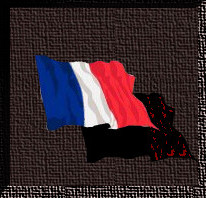
VISITA LA COLLEZIONE DEL MUSEO A CIELO APERTO DELLA SCUOLA NAPOLETANA DEI MADONNARI
SAN GENNARO ESCE INDENNE DALLA
FORNACE
Jusepe de Ribera detto "lo
Spagnoletto"
1647 - Cappella Reale del Tesoro di
San Gennaro, Napoli
Il
capolavoro, che si trova nella Cappella del Tesoro di San Gennaro,
attribuisce gesti, espressioni e modi "napoletani" al gruppo di persone
che, terrorizzate, cercano di allontanarsi dal vescovo Gennaro, uscito
miracolosamente vivo e illeso dalle fiamme della fornace in cui il
prefetto Timoteo lo aveva rinchiuso. Le "bocche urlanti" sono il segno
di un naturalismo che riconosce l'importanza della lezione
caravaggesca, ma cerca nuove strade, nel disegno e nel colore. Jusepe
de Ribera, fu un pittore spagnolo, attivo soprattutto a Napoli e più in
generale per la corte di Spagna. Fu uno dei maggiori protagonisti della
pittura napoletana ed europea del Seicento e uno dei più importanti
pittori seguaci della corrente del caravaggismo napoletano. da cui
derivò una peculiare corrente pittorica di cui fu promotore, il
tenebrismo, che vedeva una rappresentazione esasperata della realtà,
violenta e brutale, accentuata da particolari caratteri epidermici,
anatomici e psichici raffigurati.ALTRE OPERE DELL'ARTISTA

Jusepe
de Ribera called "The Spagnoletto"
1647 - Royal chapel of the Treasury of San Gennaro, Naples
The masterpiece, which is
located in the
Chapel of the Treasury of San Gennaro, attributes gestures, expressions
and "Neapolitan" ways to the group of people who, terrified, try to get
away from Bishop Gennaro, escaped miraculously alive and unharmed from
the flames of the furnace in which the prefect Timothy had locked him
up. The "screaming mouths" are the sign of a naturalism that recognizes
the importance of Caravaggio’s lesson, but looks for new ways, in
design and color. Jusepe de Ribera, was a Spanish painter, active
mainly in Naples and more generally for the court of Spain. He was one
of the greatest protagonists of Neapolitan and European painting of the
seventeenth century and one of the most important painters followers of
the trend of Neapolitan caravaggismo. from which derived a peculiar
pictorial current of which he was the promoter, the tenebrismo, which
saw an exasperated representation of reality, violent and brutal,
accentuated by particular epidermic, anatomical and psychic characters
depicted.1647 - Royal chapel of the Treasury of San Gennaro, Naples
OTHER WORKS BY THE ARTIST

VISITE DE LA COLLECTION DU MUSÉE EN PLEIN AIR DE L'ÉCOLE NAPOLITAINE DE MADONNARI
SAN GENNARO SORT INDEMNE DU FOUR Jusepe
de Ribera dit "Le Spagnoletto"
1647 -
Chapelle royale du Trésor de San Gennaro, Naples
Le chef-d’œuvre, qui se
trouve dans la
Chapelle du Trésor de San Gennaro, attribue des gestes, des expressions
et des modes "napolitains" au groupe de personnes qui, terrifiées,
cherchent à s’éloigner de l’évêque Gennaro, sorti miraculeusement
vivant et indemne des flammes de la fournaise où le préfet Timothée
l’avait fait enfermer. Les "bouches hurlantes" sont le signe d’un
naturalisme qui reconnaît l’importance de la leçon du Caravage, mais
cherche de nouvelles voies, dans le dessin et dans la couleur. Jusepe
de Ribera était un peintre espagnol, actif principalement à Naples et
plus généralement à la cour d’Espagne. Il fut l’un des principaux
protagonistes de la peinture napolitaine et européenne du Xviie siècle
et l’un des plus importants peintres adeptes du filon napolitain. d’où
dérive un courant pictural particulier dont fut le promoteur, le
ténébrisme, qui voyait une représentation exaspérée de la réalité,
violente et brutale, accentuée par des détails épidermiques,
anatomiques et psychiques dans les personnages représentés.AUTRES ŒOUVRES DE L’'ARTISTE |

Jusepe
de Ribera llamado "El Español"
1647 - Real capilla del Tesoro de San Gennaro, NAPOLI
La obra maestra, que se encuentra en
la
Capilla del Tesoro de San Gennaro, atribuye gestos, expresiones y modos
"napolitanos" al grupo de personas que, aterrorizadas, tratan de
alejarse del obispo Gennaro, salido milagrosamente vivo e ileso de las
llamas del horno en el cual el prefecto Timoteo lo había encerrado. Las
"bocas chillonas" son el signo de un naturalismo que reconoce la
importancia de la lección de Caravaggio, pero busca nuevos caminos, en
el dibujo y en el color. Jusepe de Ribera, fue un pintor español,
activo principalmente en Nápoles y más en general para el tribunal de
España. Fue uno de los mayores protagonistas de la pintura napolitana y
europea del siglo XVII y uno de los más relevantes pintores seguidores
del filón del caravaggismo napolitano. de la cual derivó una peculiar
corriente pictórica de la que fue el promotor, el tenebrismo, que veía
una exasperada representación de la realidad, violenta y brutal,
acentuada por particulares epidermis, anatómicos y psíquicos en los
personajes representados.1647 - Real capilla del Tesoro de San Gennaro, NAPOLI
OTRAS OBRAS DEL ARTISTA

SAN GENNARO KOMMT
UNVERLETZT AUS DEM OFEN
Jusepe de Ribera genannt "The Spagnoletto"
1647 - Königliche Schatzkammer San Gennaro, Neapel
Das
Meisterwerk, das in der
Schatzkammer San Gennaro zu finden ist,
verleiht der Gruppe von Menschen, die, entsetzt, versuchen, von Bischof
Gennaro Er kam unverletzt lebend aus dem Feuer, in dem Präfekt
Timotheus ihn eingesperrt hatte. Die "kreischenden Münder" sind ein
Zeichen eines Naturalismus, der die Bedeutung des
Caravaggio-Unterrichts anerkennt, aber nach neuen Wegen in Gestaltung
und Farbe sucht. Jusepe de Ribera war ein spanischer Maler, der
hauptsächlich in Neapel und ganz allgemein am spanischen Hof tätig war.
Er war einer der Hauptdarsteller der neapolitanischen und europäischen
Malerei des 17. Jahrhunderts und einer der bedeutendsten Maler des
neapolitanischen Caravaggismus. Daraus entstand ein einzigartiger
malerischer Strom, den der Fürsprecher, die Finsternis, ausstrahlte. Er
sah eine erbitterte Darstellung der brutalen, brutalen Realität, die
durch besondere Epidermis, Anatomien und Psyche in den abgebildeten
Figuren verstärkt wurde.Jusepe de Ribera genannt "The Spagnoletto"
1647 - Königliche Schatzkammer San Gennaro, Neapel